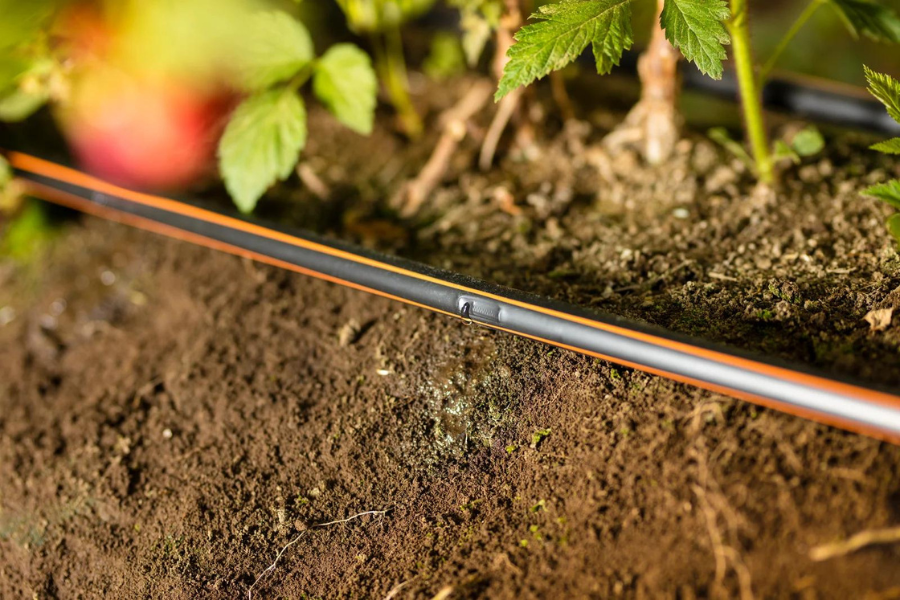Posted On: September 07, 2024
Posted By: KSNM DRIP

Every time you breathe there is a climate change, it�s happening rapidly and you don�t even know it. Like everything, our major food source is also affected along with it. So, what if there is some magic to make our agricultural practices more climate-resilient? And the thing is it�s now possible with drip irrigation systems. If you are wondering how and why, you can get all the answers you need here.
It is the practice of enhancing the ability of farming to improve the ability of farming by adapting the systems to climate changes which will ensure sustainable productivity and food security. As climatic change is happening often the risks that brings to agriculture are increasing day by day.
Climate resilient agriculture is to anticipate, prepare, adapt, absorb and recover from the impacts of extreme weather conditions. The primary objectives of CRA are,
Increasing Productivity: As the population grows, food production through agriculture must meet all the demands even when climate change poses as a threat.
Enhancing Resilience: Extreme weather events and other climatic variabilities should be withstood with proper systems, which reduces vulnerability to affecting factors.
Reduce Carbon Footprint: Go with practices that reduce carbon footprint in agricultural activities, which contributes to efforts of stooping climate change in a broader perspective.
Drip irrigation systems play an important role in CRA (Climate-Resilient Agriculture), as it enhances water efficiency and supports sustainable agricultural practices. Water is scarce and it�s unpredictable to find rain patterns, to overcome these issues drip irrigation systems are the best solution and very much suitable for CRA.
Drip irrigation systems provide the necessary water for a plant directly to its root, reducing impactful factors like evaporation and runoff. When compared to traditional irrigation methods, the benefits got from drip irrigation are immense. In drought areas drip irrigation systems are the best option for growing crops.
By providing consistent and adequate water to crops the yield produced has increased a lot. The drip irrigation doubles crop productivity ensuring more food with less water and land.
It is easier to adjust water application to the crops with respect to the wearing climate conditions using drip irrigation systems. This helps farmers to manage water resources effectively during times of drought and excessive rainfall. Due to this benefit offered by drip irrigation systems, the production of food from crops doesn't change under any climatic condition.
Soil is the most important factor in agriculture, and with drip irrigation systems you can improve The overall health of soil. Using drip irrigation reduces soil erosion and improves the moisture retention property of soil. By contributing to the overall health of the soil, the resilience of crops to climatic impact is improved greatly.
Drip irrigation systems can be used for a wide range of crops, making it possible to change crosses according to the climatic conditions of a region. Be it any crop, the benefits you get from the precaution systems in our change. This allows farmers to cultivate the right crop for the changing conditions.
Even though drip irrigation systems provide a lot of advantages to CRA, some challenges will be faced during the process.
The investment to install drip irrigation systems is a barrier for many farmers, particularly in developing regions.
To use depreciation systems effectively requires knowledge of system design and maintenance which is not readily available to all farmers.
Even though challenges, the government have come up with policies and incentives for farmers, Making them adaptive drip irrigation Technology by providing necessary resources. To learn more about the policies provided by the Government of Tamilnadu please check out, Subsidiaries a farmer can get for drip irrigation in Tamil Nadu.
In the drought-prone region of Maharashtra, India, farmers have struggled with water scarcity for years, making it difficult to maintain consistent crop yields. Traditional irrigation methods, such as flood irrigation, often led to significant water wastage, exacerbating the problem.
To combat this, many farmers in the region began adopting drip irrigation systems. By delivering water directly to the roots of their crops, they were able to reduce water usage by up to 60% while still maintaining or even increasing their crop yields.
One such farmer, Sunil Patil, transitioned to drip irrigation on his sugarcane farm. Previously, his crops were often stressed due to irregular rainfall, leading to lower yields and income. However, after implementing drip irrigation, Patil was able to sustain his crops through dry spells, significantly improving both the health of his crops and his financial stability. This change not only increased his productivity but also made his farming practices more resilient to the changing climate.
This example shows how drip irrigation can be a vital tool for farmers facing the challenges of climate change, helping them conserve water, increase yields, and build a more sustainable future.
The effect of climate on agriculture is serious, and the implementation of Climate-Resilient Agricultural practices has brought a solution to this. Drip irrigation systems are one of the solutions to battle climatic conditions and provide better yields of crops. If you are a farmer is time that you check out the subsidiary provided by the government and change to depreciation systems to battle the changing climatic conditions.